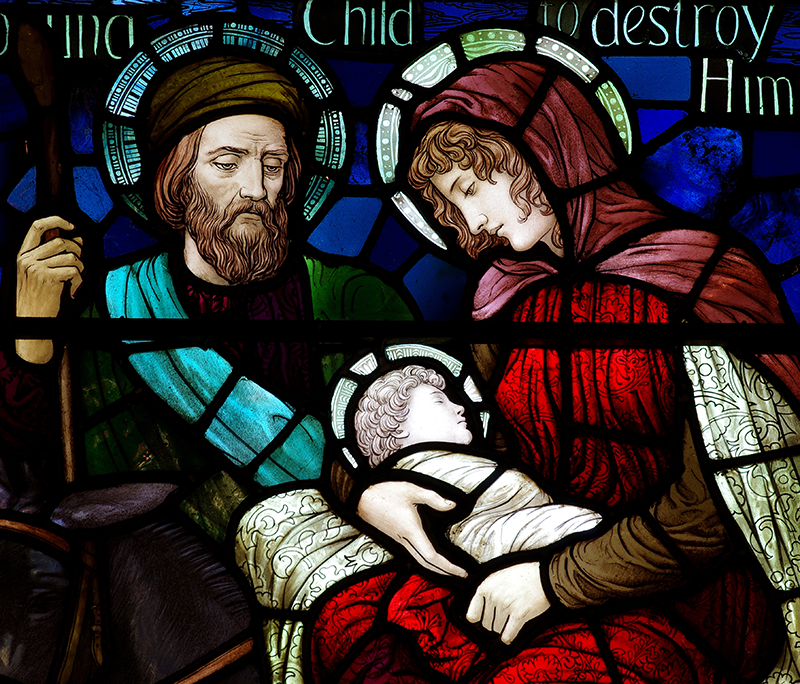
05 Dec JESUS IS FULLY GOD AND MAN: The Christ of Christmas Part 5 of 8
Every Christmas, we sing songs and open cards about Jesus who is Immanuel, God with us. But, what does this mean? How could this be?
Jesus was/is human and Jesus was/is morally perfect without any sin. This paradox has been exploding minds for thousands of years. In AD 451, the Council of Chalcedon convened in response to many heresies that wrongly defined the humanity and divinity of Jesus. The Chalcedonian Creed drafted at these meetings declared that Jesus Christ is one person with two natures—human and divine—who is both fully God and fully man.
Theologically, the term for the union of both natures in Jesus Christ is hypostatic union, which is taken from the Greek word hypostasisfor “person.” This concept summarizes three principles:
- Christ has two distinct natures: humanity and deity.
- There is no mixture or intermingling of the two natures.
- Although he has two natures, Christ is one person.
The Chalcedonian summary of the Incarnation is the position held by all of Christianity, including Orthodox, Catholic, and Protestant Christians. Despite this helpful contribution of clarity and unity, however, the nature of Jesus has continued to be controversial throughout church history.
HISTORICAL ERRORS
There are two general ways in which various thinking has erred regarding the humanity and divinity of Jesus. The first is to deny the full divinity of Jesus in favor of his humanity; the second is to deny the full humanity of Jesus in favor of his divinity. Christ is fully Godand fully man, and great mistakes ensue when we think he is fully God or fully man.
The full divinity of Jesus has been denied by heretics such as the Ebionites, dynamic monarchianists, Socinians, Servetusites, Nestorians, modalists, monarchianists, Sabellianists, Unitarians, Social Gospel proponents, “death of God” theologians, liberal “Christians,” Arians, Jehovah’s Witnesses, Mormons, functionalists, Adoptionists, Kenotics, and Apollinarians. This perspective emerges in popular culture from time to time, such as in the popular book and film The Da Vinci Code.
According to the Jehovah’s Witnesses, which Christians consider a cult, Jesus was created by God the Father billions of years ago as the archangel Michael and is not equal to God the Father. The Mormon cult teaches that Jesus was born as the first and greatest spirit-child of the Heavenly Father and Heavenly Mother, and is also the spirit-brother of Lucifer, who became a god but whose deity is no more unique than many people’s. Some New Agers say Jesus was not fully God and fully man, but rather half man and half alien. Oneness Pentecostals falsely teach that there is no Trinity but rather that Jesus appears in the roles of Father, Son, and Spirit.
The full humanity of Jesus has been denied by heretics such as Marcionites, Docetists, Gnostics, modal monarchianists, Apollinarian Paulicians, monophysitists, New Agers, and Eutychians. Some Christian worship songs have also tended to ignore the full humanity of Jesus. For example, there is a well-known hymn about Jesus as a baby that contains the line, “No crying he makes,” as if Jesus were not truly a human child that would cry to notify his mother when he was hungry, wet, or had an upset stomach.
Volumes have been written about the both/and nature of Jesus Christ, and in the remainder of this post I will do my best to summarize what the Bible and orthodox doctrine have to say on this important subject in my next blog post of this series. In the meantime, are you more comfortable with the humanity or divinity of Jesus? Why?
Portions of this blog post were adapted from Vintage Jesus (2007, Crossway) and Doctrine (2010, Crossway), by Mark Driscoll and Gerry Breshears.


